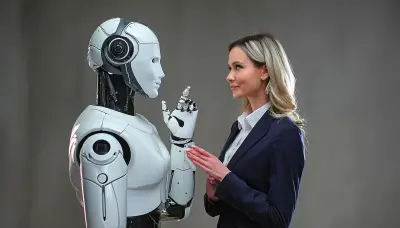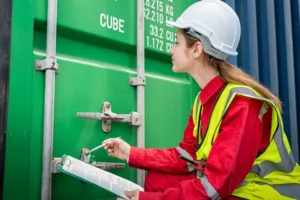In the ever-evolving world of digital art, a fascinating new trend is emerging: AI-generated digital tapestries. These intricate, algorithmically designed artworks blend traditional textile artistry with cutting-edge artificial intelligence, creating stunning visual pieces that are both modern and timeless. As more artists and designers experiment with AI tools, digital tapestries are becoming a popular choice for home decor, fashion, and even virtual spaces.
What Are AI-Generated Digital Tapestries?
Digital tapestries are large-scale, highly detailed artworks that mimic the look of woven textiles—but instead of threads, they are crafted using AI algorithms. These designs often feature:
- Complex patterns inspired by historical tapestries, nature, or abstract geometry
- Rich color palettes that shift and blend seamlessly
- Textured effects that simulate fabric, embroidery, or brushstrokes
Unlike traditional tapestries, which require months of hand-weaving, AI-generated versions can be created in minutes using tools like MidJourney, DALL·E, or Stable Diffusion. The artist inputs a text prompt (e.g., “a Baroque-style tapestry with celestial motifs”), and the AI produces a unique, high-resolution design.
Why Are They So Popular?
1. Unlimited Creativity
AI removes the technical barriers of traditional tapestry-making, allowing artists to experiment with styles that would be difficult or impossible to weave by hand. Want a tapestry that blends Renaissance florals with futuristic cyberpunk elements? AI can generate it effortlessly.
2. Customization for Modern Lifestyles
Homeowners and interior designers love digital tapestries because they are:
- Easy to display (printed on canvas, hung as digital frames, or projected onto walls)
- Customizable (colors and themes can be adjusted to match any decor)
- Sustainable (no physical materials wasted in trial-and-error weaving)
3. A New Art Market
AI-generated tapestries are becoming collectible digital assets. Some are sold as:
- NFTs (non-fungible tokens) for virtual galleries
- Limited-edition prints for physical spaces
- Dynamic wallpapers that change over time
Platforms like Etsy, SuperRare, and Sedition now feature AI tapestry artists, making these works accessible to a global audience.
How Are Artists Using AI for Tapestry Design?
1. Hybrid Human-AI Collaboration
Many artists use AI as a starting point, then refine the designs manually. For example:
- An AI generates 10 tapestry variations based on “Medieval unicorn hunt.”
- The artist selects the best one and enhances it in Photoshop or Procreate.
- The final piece is printed on fabric or displayed digitally.
2. Generative Adversarial Networks (GANs)
Some creators train custom AI models on datasets of historical tapestries (e.g., the Bayeux Tapestry or William Morris designs). The AI then produces new works in a similar style but with original patterns.
3. Interactive and Animated Tapestries
Cutting-edge digital tapestries go beyond static images:
- React to viewers (e.g., change colors when someone approaches)
- Incorporate motion (slowly shifting patterns like a living artwork)
- Augmented reality (AR) versions that “come alive” when viewed through a phone
The Future of AI Tapestries
As AI improves, expect to see:
- AI-assisted physical weaving, where algorithms guide robotic looms
- Personalized tapestries generated from your photos or DNA data
- Virtual reality (VR) tapestries that transform 3D spaces
Critics argue that AI art lacks the “soul” of handmade work, but proponents see it as a new artistic frontier—one that democratizes design and pushes creative boundaries.
How to Get Started with AI Tapestries
- Experiment with free tools like NightCafe or Deep Dream Generator.
- Study textile history to inspire your prompts (e.g., “Art Deco tapestry with peacocks”).
- Print your favorites on demand via Spoonflower or Society6.
Final Thoughts
AI-generated digital tapestries represent a thrilling fusion of art, technology, and tradition. Whether you’re an artist, collector, or just someone who loves beautiful spaces, this trend offers endless possibilities to explore. As AI continues to evolve, so too will the ways we create—and appreciate—art.
Get more details from these resources :
https://familyhousepai.com/
https://familleeducation.org/
https://gotomariko.com/
https://jetaport.com/
https://theloverspoint.com/
https://godblogcon.com/
https://leadershipeditors.com/
https://wahcbd.com/
https://exclusivenewstoday.com/
https://premiobrasilambiental.com/
https://youarebeingwatched.us/
https://kidsearnmoney.co/
https://newportbluesfestival.co.uk/
https://maitreyarelictour.com/
https://sandranews.com/
https://cryptexplorer.com/
https://offiice-officecom.com/
https://revisedtruth.com/
https://balarindangnews.com/
https://creativehomestaging.net/
https://pokercewek.org/
https://israup.net/
https://mx-df.net/
https://inewsiran.com/
https://madeinitalytravel.com/
https://i-mpressmta.com/
https://amarillaautomotores.com/
https://newstotop.com/



